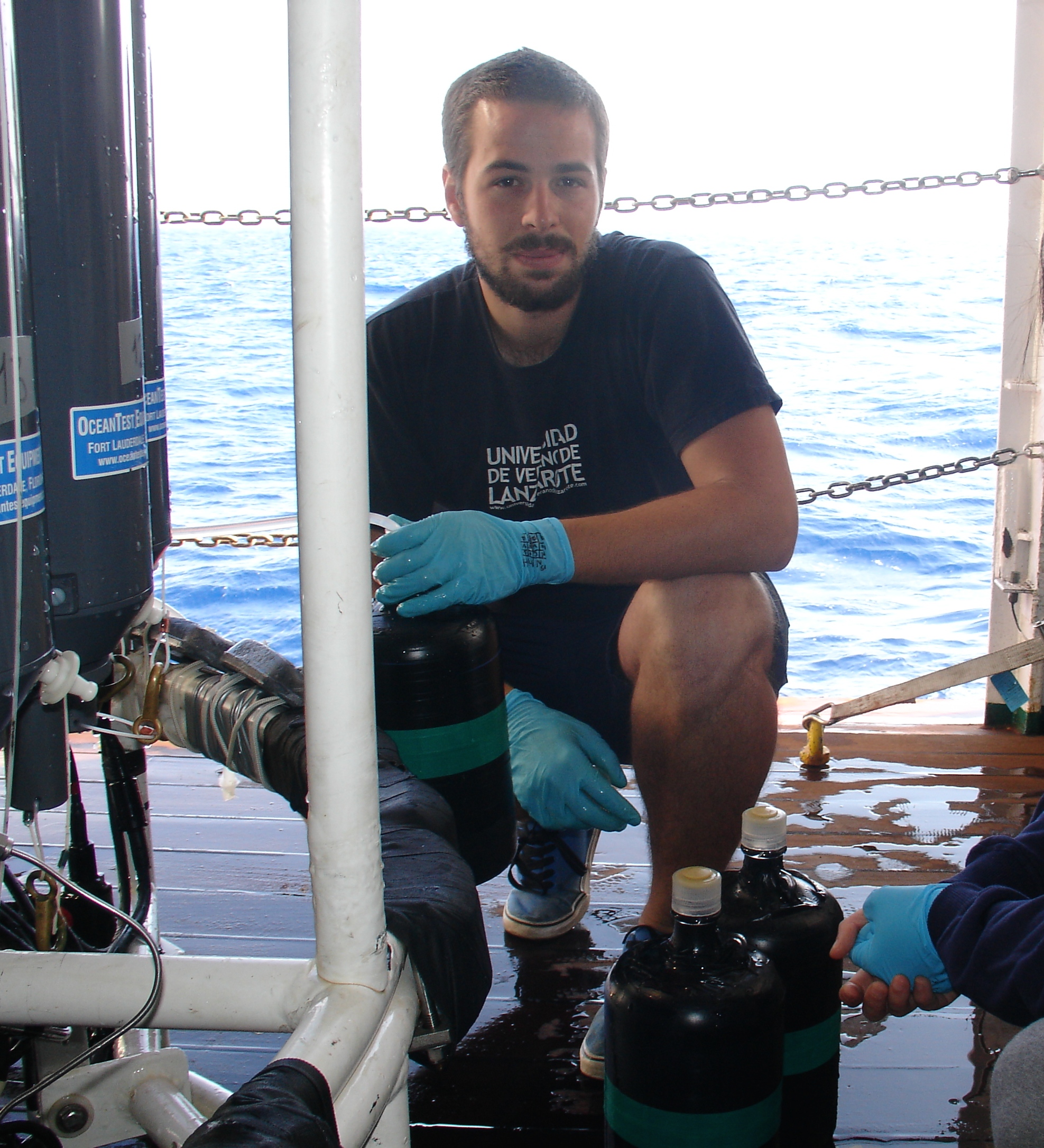Un joven investigador ofrece el resultado de sus investigaciones en Ciencia compartida
- Compartir en Linkedin
- Compartir en Facebook
- Compartir en las redes:
 Este miércoles Nauzet Hernández ofrece una charla a las 12:30 en la Sala de grado de la Facultad de Ciencias del Mar, dentro del cuarto ciclo de Ciencia compartida: Short-term variability of picoplankton across the wind-shear region south of Gran Canaria.
Este miércoles Nauzet Hernández ofrece una charla a las 12:30 en la Sala de grado de la Facultad de Ciencias del Mar, dentro del cuarto ciclo de Ciencia compartida: Short-term variability of picoplankton across the wind-shear region south of Gran Canaria.
Nauzet Hernández es Máster en Oceanografía por la ULPGC. Hoy en día es doctorando en el Grupo de Oceanografía Biológica del Instituto de Oceanografía y Cambio Globa (IOCAG)l, bajo la dirección del catedrático Javier Arístegui Ruiz. Su campo de estudio es la oceanografía biológica, más concretamente se centra en los efectos de los procesos de sub-mesoescala en la estructura de las comunidades planctónicas y la bomba biológica. Nauzet es una de las personas que contribuyó a que Ciencia compartida siga siendo una realidad actuando como voluntario en la segunda edición.
We have studied the short-term variability -at temporal scale of days and spatial scale of 5 km- of the hydrographic field, organic and inorganic nutrients, chlorophyll and picoplanktonic abundances, across a 40 Km section crossing a frontal system south of Gran Canaria, where anticyclonic eddies in early-stages of formation and convergent fronts have been widely reported in the past. Each cruise consisted in a 3-4 daily-repeated section, and was carried out at the same period of the year (May) during two consecutive years (2011 and 2012). The main goal of our study was to analyze the picoplankton response to short-term variability at scales not considered in regular oceanographic samplings, even in regions with complex hydrographic fields. Our results show that both daily and submesocale (below the local Rossby radius of deformation) variability were significant, ranging on average 2 fold across the different stations and between days, being in some cases of the same magnitude of the interannual variability. Our data support theoretical simulations that suggest that submesocale processes at frontal systems would modulate biogeochemical budgets and plankton distributions in the ocean, by intensifying nutrient fluxes, subducting organic material or enhancing horizontal stirring. We conclude that in order to study the influence of oceanographic processes on planktonic communities, at least in regions of high hydrographic variability, we need to address a sampling strategy with a spatial resolution at the scale of frontogenesis (the submesoscale) rather than at a scale of eddies (the mesoscale).
